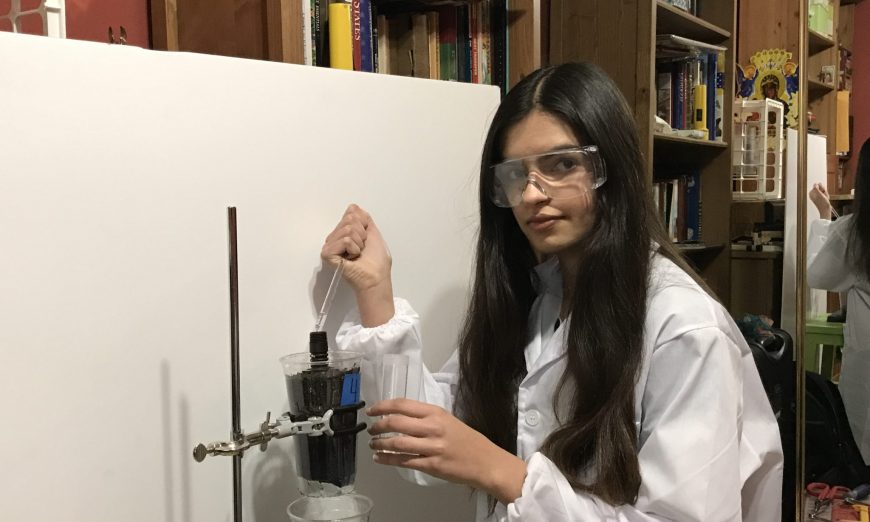For the last three years, Wilcox High School student Visala Tallavarjula,16, has been planting with different soils to study which soils help yield the best radish crop and how to best conserve water. Her paper describing the project, titled “Irrigation Water Usage Efficiency Improvement by Modification of Root Zone Soil Properties Using Carbon Sequestration” was entered into the 2018 Spellman High Voltage Electronics Clean Tech Competition. Selected as a finalist, Tallavarjula will be presenting her work at the July 12 competition to be held at Stony Brook University at Long Island, New York. The competition is hosted by The Center for Science Teaching & Learning (CSTL).
Hoping to pursue a career in STEM someday, Tallavarjula worked with her father, Sai, an engineer, in the team Seq2Tran for this project.
“My dad helped me a lot with the calculations and also the design of experiments,” Tallavarjula said. “The design of experiments is based on a statistical model. I haven’t taken statistics yet in my school so I don’t know how to use JMP, a program for people working with statistics. It makes predictions using data analysis. My dad taught me how to use JMP.”
Tallavarjula shared main points about her project.
“I used charcoal to amend soil at the root zone called PCL (Percolation Control Layer) to improve water retention and use most of the water for plant transpiration,” she said. “I found that with rough charcoal surface plant yield (radish weights and leaf size) is the highest, while using 50 percent less water compared to reference case of surface watering and no PCL. Also, for my optimized case, I supplied water using inserts and used top soil bed to prevent evaporation loss. This method can improve efficiency of gravity fed drip irrigation systems.”
Sharing her concerns about the lack of interest in STEM careers in the United States, Dr. Ray Ann Havasy, Director of CSTL and creator of the competition, referred to results from a 2015 survey facilitated by the PISA (Program for International Student Assessment) and the TIMSS (Trends in International Mathematics and Science Study).
“From this survey, 73 percent of students from Singapore picked a STEM career,” Havasy said. “Seventy-one percent of the students from India also picked a STEM career. Forty-one percent of kids from Finland picked a stem career. Do you know how many kids from the United States want a STEM career? Eight percent of American kids picked a STEM career. So we’re at a crisis point. If we don’t think of ways for kids to think of a way to pursue a career in STEM, we lose our economic advantage. By hosting a contest like this, we hope to highlight to kids how cool STEM is and how they can innovate things to help save the world.”
Applicants for this competition were asked to submit solutions for climate change. Finalists from Peru, Singapore, Ireland and the United States will meet at the July 12 competition.
“This is the only high school competition in the world that focuses on clean technology,” Havasy said. “What the judges are generally looking for are the quality of the innovations. Will it work? What about its use of clean technology? Did the students use good engineering and scientific principles? The projects were good. There was very little point spread between the 10 teams who made it to the finals.”






